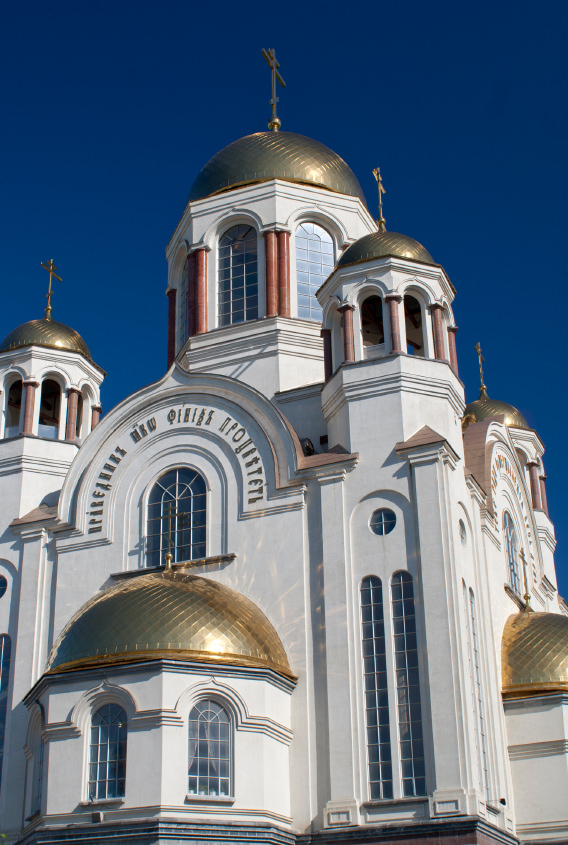Between Moscow and Lake Baikal lie over 3,000 miles of track. The Trans-Siberian railroad winds through lowland plains and mountain ranges, chugging away from Russia’s urban centers and slowly out into the unknown. Or at least, that’s how it feels to a traveler, as the suburban brick and concrete fades into a pastiche of birch and meadow.
This is Russia’s economic heartland and its first frontier. Conquered by the Mongols, settled by Cossacks, and now home to most of Russia’s industry and farmland, the western part of Siberia has plenty to explore. A few cities account for most of the population; stopping in these urban centers, you’ll get a sense of how Siberian Russia differs from Moscow and St. Petersburg.
Kazan is a Trans-Siberian traveler’s first glimpse of what is to come. Although a bit south of the main rail route, the city’s unique heritage merits a detour. Mosque minarets puncture the skyline. Many of the inhabitants claim to be descendents of the Tatars, who ruled 700 years ago, and indeed, Kazan is the capital city of the independent Republic of Tatarstan. Siberia is studded with such independent republics, areas where minority culture has resisted (or re-emerged from) Russification.
Due to its ancestry, the city has some beautiful architecture. The Kremlin, a UNESCO Heritage Site, was originally a Tatar fortress. Overlooking the Volga River, the Kremlin is a striking sight: above the fortress walls rise the plump Russian Orthodox onion-domes, squat gumdrops atop white towers; next to it, the Kul Sharif mosque lifts four white minarets, tipped in blue. The coexistence of these two centers of worship, the focal point of Kazan, reflects the diversity of its population – and initiates a traveler’s shift away from fully European Russia.
A day or so later on the train, the landscape outside the train window begins to change. The Ural Mountains begin to rise in fir-tipped karst formations. You almost don’t notice it – there’s an obelisk, off to the side of the tracks in a shady stand of trees. The train whips past, and you’re in Asia.
From the train, Yekaterinburg looks like a sprawl of concrete. Soviet industry found a hub here, and the city remains rather grey. However, it has one key point of interest: revolutionaries killed Russia’s last Tsar and his family in Yekaterinburg. Although the house where they had awaited execution no longer stands, the Church of All Saints commemorates the murders and the canonization of the family. The modern Russian people seem to feel a tragic sympathy with the dead Romanovs, and the church is a solemn, touching reminder of the brutality that inaugurated the Soviet Union.
From Yekaterinburg, the train dips south toward Kazakhstan. Adventurous travelers can disembark at Yekaterinburg for a trek into the Altai Mountains, a remote alpine wilderness. Historically the home of nomadic peoples, whose culture is closer to Mongolian and Central Asian than Russian peoples, the Altai are renowned for adventure travel. The Ob River originates in the peaks of the Altai, and white-water rafting is a popular activity. The area also provides a glimpse into some of the region’s traditional, non-Russified cultures, which have survived relatively autonomously in the remote landscape.
Venturing deeper into Siberia, the train crosses the Ob River. The next major stop is Novosibirsk, a metropolis by Siberian standards. Novosibirsk is Siberia’s largest city and therefore contributes a large share of the region’s culture. An active ballet company, opera house, and student population gives the city a vibrant feel. Founded in the 1950s, the Academy Town was once the scientific research hub of the Soviet Union; now it houses Novosibirsk University, as well as several private research and technology companies. Tucked among pine trees, the university makes a nice place to stroll.
A day or so later down the tracks, the train crosses the Yenisei River at Krasnoyarsk. Hemmed by mountains, this pleasant city’s main attraction is its proximity to Stolby Nature Reserve. For climbers and hikers, the natural area tantalizes: bulbous granite pushes up out of the forest, forming fantastical pillars. Hardcore rock climbers often go vertical; for the average tourist, a bit of scrambling and hiking in the reserve makes an enjoyable day-trip from Krasnoyarsk.
At this point, the Trans-Siberian has traveled around 4000 kilometers. Even if you’ve disembarked a few times, you’ll likely be ready for a break from train travel. After Krasnoyarsk, the next major destination along the Trans-Siberian is Irkutsk and the shores of Lake Baikal. Leaving behind the agricultural and industrial heartland, the train is entering a world of shamanic legend and nomadic peoples – a very different Russia than the one you left behind in Moscow.
This is part of a series of articles offering advice and travel tips based on Caitlin Dwyer’s experience riding the Trans-Siberian Railway. See her first article, ‘Riding the Trans-Siberian Railway: Deciding on Your Journey‘. You may also want to read: ‘How to Apply for a Russian Visa‘; ‘Riding the Trans-Siberian Railway: What to Bring’; ‘Riding the Trans-Siberian Railway: Starting in Moscow‘
For ideas about where to stay in Moscow, see our Editor’s Picks for Moscow.
Written by Caitlin Dwyer for EuropeUpClose.com




